Have you recently moved to a home with a septic tank, or are you considering installing one for a household or commercial property in a rural area without access to mains sewage?
Here in this blog, we’ll walk you through what a septic tank is, how to properly maintain it and the environmental implications to consider.
Skip to section:
Why Might You Need A Septic Tank?
Every home needs a system to collect and treat wastewater—whether it’s sewage from toilets or greywater from showers, sinks, dishwashers, and washing machines. If your property has a septic tank, it plays a vital role in managing your household waste disposal.
Homes or commercial properties with septic tanks lack access to a main sewer system. This is often due to the property’s location or terrain. Rural or remote areas, as well as sites with challenging features like hilly terrain or dense bedrock, can make laying sewer pipes difficult. These factors can also lead to higher costs.
In these cases, installing a septic tank provides a practical and more affordable alternative to an extended sewer connection.

How Does a Septic Tank Work?
A septic tank is an underground container that treats household sewage by harnessing natural bacteria to break down waste. When wastewater from toilets, sinks, and appliances enters the tank, solids settle at the bottom, forming sludge, while oils and grease float to the top, creating a scum layer.
The bacteria digest the organic material in the sludge through a process called anaerobic digestion. This process reduces its volume over time. Meanwhile, the middle layer, mostly liquid, flows out of the tank into a nearby drain field or soakaway system, where it is further filtered through soil, providing a safe way for the treated water to re-enter the environment.
Unlike a cesspool, which is a sealed tank requiring regular emptying, a septic system continually processes wastewater. This reduces the need for frequent pumping.
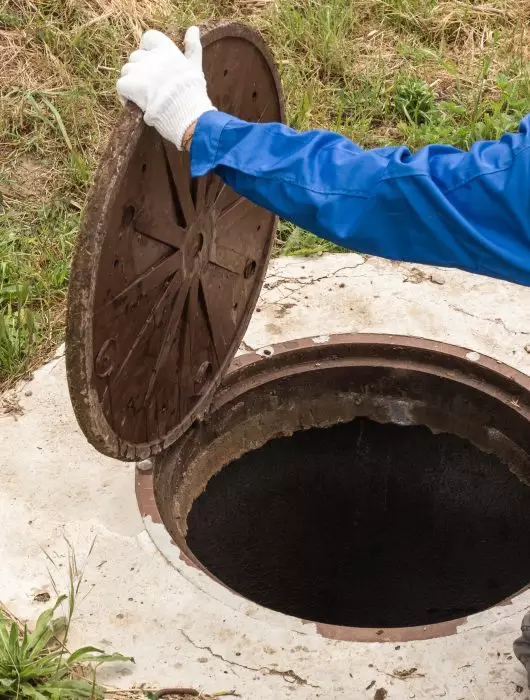

What Are the Parts of a Septic Tank?
A septic tank consists of several key components, each serving a specific role in wastewater treatment. The inlet pipe connects the tank to the house, allowing wastewater to flow into the tank.
Inside, three layers form: solid sludge at the bottom, a floating scum layer of oils and grease at the top, and a liquid layer in the middle. Inspection pipes provide access points to monitor the tank’s contents and determine when pumping is needed, while vent pipes allow gases produced during waste breakdown to escape safely.
The outlet pipe carries the liquid part from the tank to a drain field. Perforated pipes in trenches of gravel or stone allow the liquid to disperse slowly into the soil. Here, the soil acts as a natural filter, further purifying the water before it re-enters the environment.
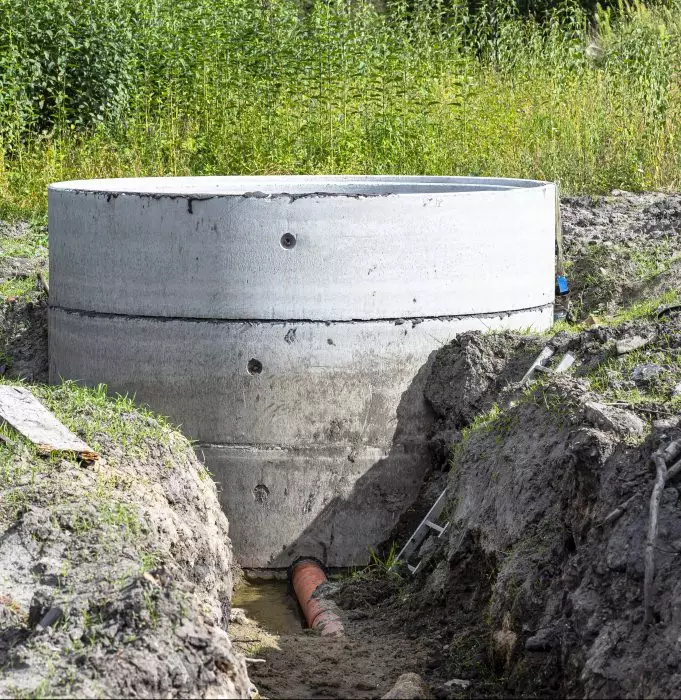
Maintenance Of Your Septic Tank
To keep your septic tank functioning well, it’s essential to be mindful of what goes into your wastewater system.
Septic Tank Care
Avoid using bleaches, ammonia, or antibacterial cleaning products. These can disrupt the natural bacterial balance crucial for waste breakdown. Similarly, do not pour oils, fats, or grease down the sink, as they can solidify and cause blockages or build up as a scum in the uppermost layer of your septic tank.
It’s also best to avoid using kitchen sink waste disposals, as they increase the amount of solid waste, which can quickly overwhelm the tank. Check out our blog on what can you put down a septic tank for more information.
Septic Tank Bacteria
Enhancing the tank’s bacterial activity can significantly improve waste breakdown. This reduces the frequency of costly septic tank emptying services. Adding beneficial bacteria, such as those in products like Envii Sludge Klear, can help. It maintains a low level of waste accumulation by boosting the natural digestion process.
These bacteria can be introduced by flushing a product like a Septic Klear tablet down the toilet, providing a consistent dose of bacteria to break down waste effectively. To target the fats, oils and grease in your septic tank, drain field or kitchen drain, use Envii F.O.G Klear.
Cleaning Products
With regular bacterial supplementation and careful cleaning practices using natural products like baking soda or septic-safe cleaners, you can create an ideal environment for bacteria to thrive. This approach allows your system to maintain efficiency over time, saving you money and extending the life of your septic tank.
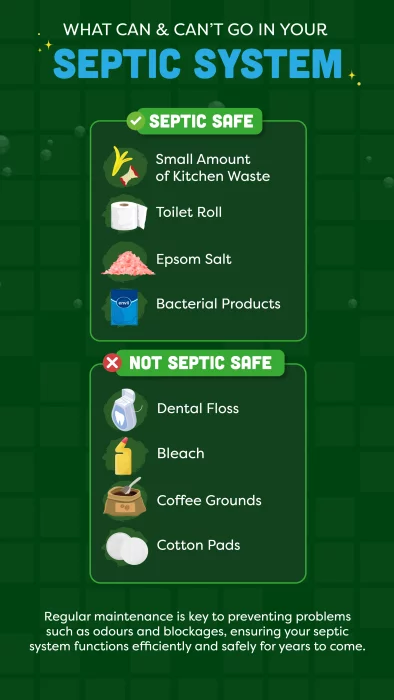
Septic Tank Regulations
As a property owner with a septic tank, you’re responsible for its maintenance and for ensuring that the sewage discharge doesn’t pollute surface water or groundwater. For detailed regulations and guidelines, refer to the government website.
Environmental Implications
One common challenge with septic systems is preventing blockages, overflows, or drain field inefficiencies. Consequently, this can lead to system failures and the release of untreated wastewater. This untreated discharge can contain harmful bacteria and pathogens.
Additionally, improperly managed septic systems risk contaminating nearby water sources, potentially leading to nutrient pollution and algal blooms. With regular maintenance and responsible use, however, these issues are typically avoidable.
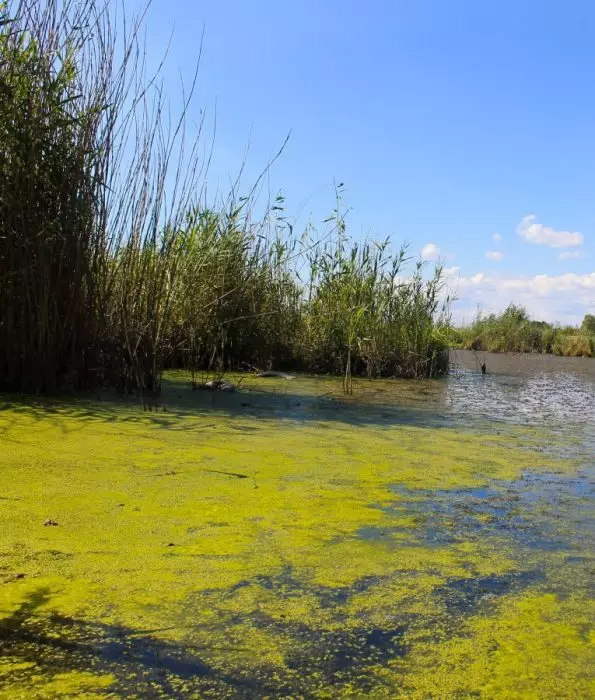
Summary
A septic tank is essential for properties without access to main sewage systems, providing a practical way to manage household wastewater. Proper maintenance is key to preventing pollution, system failures, and costly repairs.
Adding beneficial bacteria, such as those in a Septic Klear tablet, just once a month, will help to keep the tank’s natural waste breakdown process efficient. For a targeted solution to fats, oils, and grease buildup, Envii F.O.G Klear can be particularly effective.
For any further questions or specific advice, feel free to get in touch with our team—we’re here to help!
Related Products
-
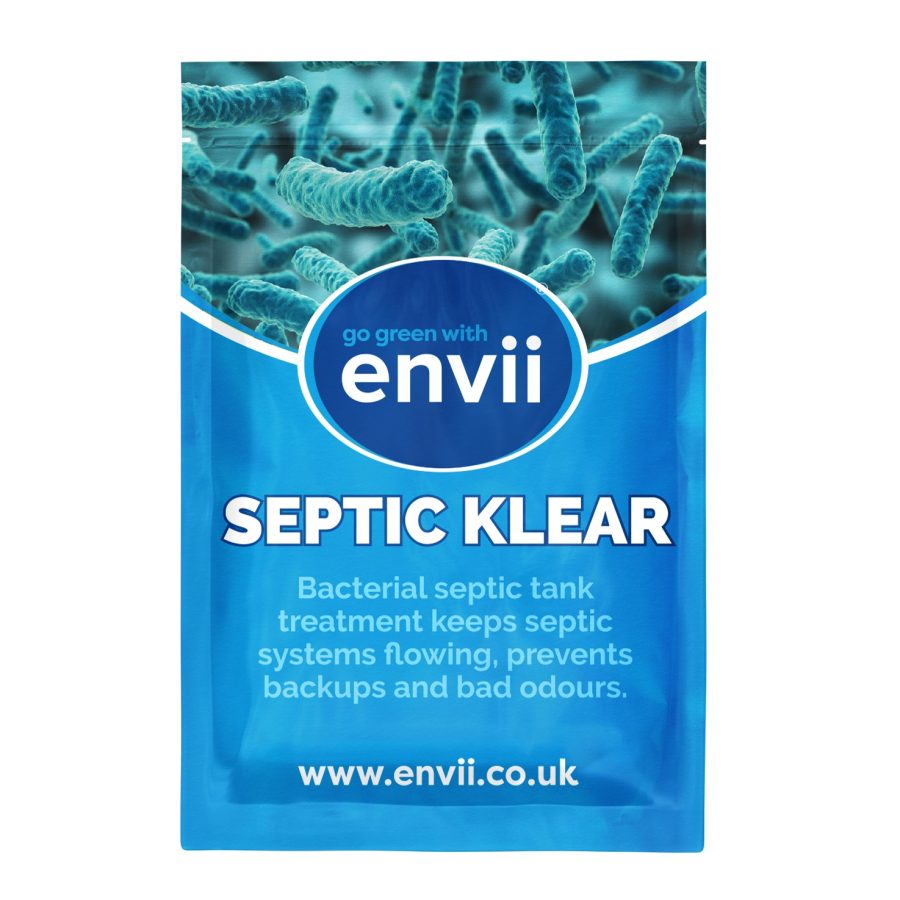
Envii Septic Klear
£12.99Cleans septic tanks and eliminates bad odours from occurring.Add to Basket -
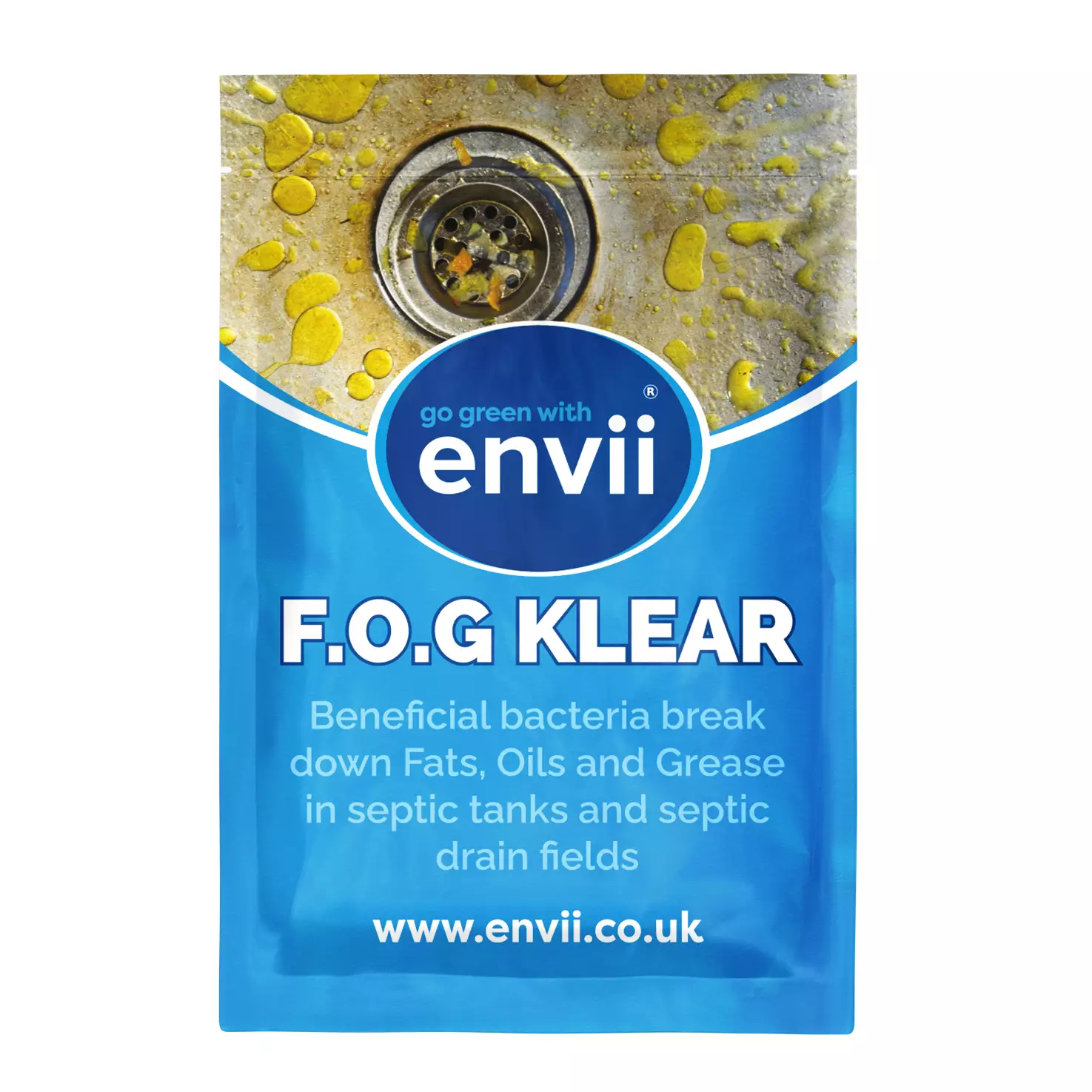
Envii F.O.G Klear
£14.99Clears grease, fats and oils from septic tank drain fields.Add to Basket

 Call us on 01246 240880
Call us on 01246 240880 Free 48hr Delivery
Free 48hr Delivery Sign-up and receive 10% off
Sign-up and receive 10% off